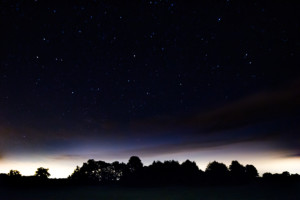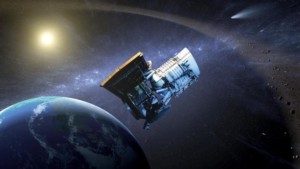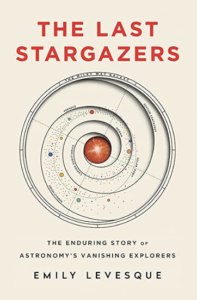Key information for official sites with agreements:
- Camp High Road is open unless specified on Camp High Road specific page
- C.M. Crockett is open only during periods specified on the Crockett specific page
- Meadowkirk observing requires explicit permission. See Meadowkirk page for details
- Sky Meadows State Park is open for vetted volunteers only unless posted on the Sky Meadows specific page
- Spruce Knob Mountain Center: See site specific page or contact site coordinator for availability

RSVP here.
Members of the public are invited to view the wonders of the universe through the telescopes of NOVAC volunteers. You do not need to be a member of the club or own any astronomical equipment to attend. Masks are required and up to 10 visitors at a time are allowed around a single telescope.
Featured objects include Mars, the Orion Nebula, various star clusters, and galaxies.
From 5pm until sunset (7:42pm) you can inspect different telescopes and other visual equipment on the field. Have a cosmic question? One of our astronomers will be happy to help you. After sunset be prepared to enjoy the wonders of the night sky!
After arriving at the main gate, take the first left into the gravel parking lot. There is additional parking up the road. There should be some telescopes setup in the nearby field. Please dim your headlights if you are arriving after dark and please do not drive onto the field unless you are a volunteer.
Dress warmly! Please check the weather forecast. For lighting, cover a flashlight in red cellophane (the darker the better). Bring along water to keep hydrated and plan on staying the entire evening or as long as the weather allows. Feel free to walk around and the different telescopes on display but please ask the owner before using. Please monitor your children around expensive astronomical equipment. Remember, telescope mirrors are sensitive to cigarette smoke and bug spray. Finally, pets should not be brought onto the observing field unless they are service animals.
Note: This event is weather-dependent and may be cancelled because of significant cloud cover or precipitation.
Please read the C.M. Crockett Page for park details.

Asteroids and Comets: Earth’s Nearest Neighbors
Dr. Amy Mainzer
Sunday, April 11, 2021
7:30 PM to 9:00 PM EST
Online event
meet.google.com/osh-bcyd-gti
Monthly Meeting – Public Invited
Abstract:
Asteroids and comets, leftover fragments from the formation of our solar system, represent repositories of primordial material. As such, they provide clues to the processes by which planetary systems form and evolve. Over time, asteroids and comets have impacted the Earth and its moon, altering the surfaces of both. Scientists’ understanding of these small bodies has grown with improvements in survey technology, as well as in situ exploration missions. Nonetheless, many basic questions about these objects remain, including when the next substantial Earth impact might occur.
Bio:
Dr. Amy Mainzer is a professor of planetary science at the University of Arizona. She is the principal investigator of NASA’s NEOWISE mission, which studies Earth-approaching asteroids and comets, and built a camera for NASA’s Spitzer Space Telescope.
RSVP here.
Members of the public are invited to view the wonders of the universe through the telescopes of NOVAC volunteers. You do not need to be a member of the club or own any astronomical equipment to attend. Masks are required and up to 10 visitors at a time are allowed around a single telescope.
Featured objects include a First Quarter Moon, Mars, the Orion Nebula, various star clusters, and distant galaxies.
From 5pm until sunset (7:47pm) you can inspect different telescopes and other visual equipment on the field. Have a cosmic question? One of our astronomers will be happy to help you. After sunset be prepared to enjoy the wonders of the night sky!
Dress warmly! Please check the weather forecast. For lighting, cover a flashlight in red cellophane (the darker the better). Bring along water to keep hydrated and plan on staying the entire evening or as long as the weather allows. Feel free to walk around and the different telescopes on display but please ask the owner before using. Please monitor your children around expensive astronomical equipment. Remember, telescope mirrors are sensitive to cigarette smoke and bug spray. Finally, pets should not be brought onto the observing field unless they are service animals.
Note: This event is weather-dependent and may be cancelled because of significant cloud cover or precipitation.
See front page of NOVAC Site for changes to event. More information about Great Meadow including directions and parking visit the Great Meadow Site page.
Details and Google Meet link TBA.

The Last Stargazers
Dr. Emily Levesque
Sunday, May 2, 2021
7:30 PM to 9:00 PM EST
Online event
meet.google.com/osh-bcyd-gti
Monthly Meeting – Public Invited
Abstract:
A bird that mimicked a black hole. The astronomer that discovered microwave ovens. A telescope that got shot. The science of astronomy is filled with true stories (and tall tales) of the adventures and misadventures that accompany our exploration of the universe. Join Dr. Emily Levesque, author of the new popular science book The Last Stargazers, to take a behind-the-scenes tour of life as a professional astronomer. We’ll learn about some of the most powerful telescopes in the world, meet the people who run them, and explore the crucial role of human curiosity in the past, present, and future of scientific discovery.
Bio:
Emily Levesque is an astronomy professor at the University of Washington. Her work explores how the most massive stars in the universe evolve and die. She has observed for upwards of fifty nights on many of the planet’s largest telescopes and flown over the Antarctic stratosphere in an experimental aircraft for her research. Her academic accolades include the 2014 Annie Jump Cannon Award, a 2017 Alfred P. Sloan fellowship, a 2019 Cottrell Scholar award, and the 2020 Newton Lacy Pierce Prize. She earned a bachelor’s degree in physics from MIT and a PhD in astronomy from the University of Hawaii.
